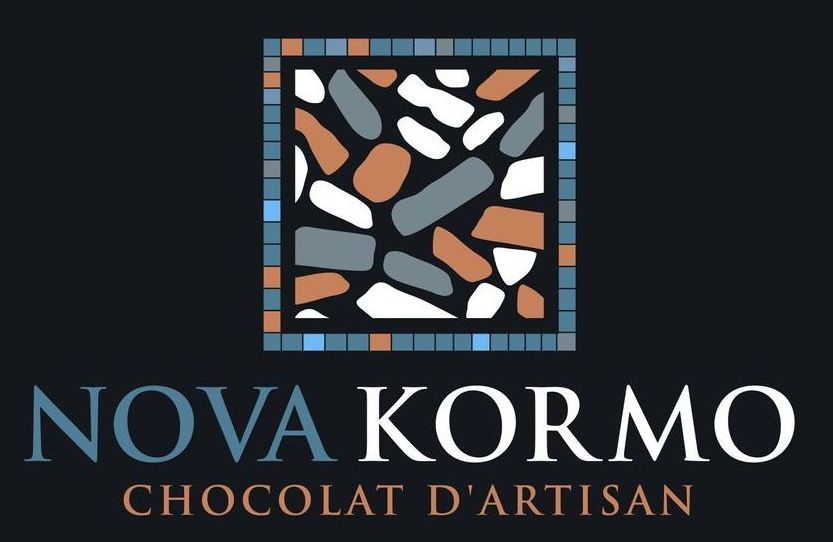Kormo...so what is it?
Kormo, as you see throughout this website, is a chocolate log, or "salami" looking type of dessert made traditionally with tea biscuits, or butter cookies mixed together with various types of ingredients depending which recipe you are following or which country and subsequently which region the recipe is from.
The 14 known countries that lay claim to a version of this dessert are listed below should you want to look up the different variations to try making at home. If your family originates from one of the countries below, ask your parents or grandparents about it. They will most likely smile with nostalgia.
This dessert was widely considered the "poor" persons cake as the ingredients are simple yet, if made well, it is easy and delicious.
What was curious to us is that no one tried to elevate it to something more. Well, that's were
NovaKormo
stepped in.
Kormo is a no bake dessert. What you do is select the cacao, or chocolate you would like to use, add some binders depending the recipe such as margarine, or butter, and milk. In some cases alcohol is added to bring out the flavor in the cookies or biscuits you select, melt it and mix it all together and refrigerate.
Depending on the recipe and the region, walnuts, and or pistachios can be used as well or any nuts you prefer.
This was a versatile dessert for those war stricken countries that didn't have all the ingredients all the time readily available, and made it easy to make an enjoyable chocolaty dessert.
You will notice across most countries a theme of calling it salami or sausage. This is for 2 reasons. The biscuits broken up resemble the fat chunks in salami and other cured meats.
The 2nd, is many did not have access to cake molds and simply rolled it in parchment paper and chilled until ready to serve.
In Greece it is called Kormo, which means "log" in Greek, and it also goes by "mosaiko" because each piece is its own little mosaic.
We prefer to use different molds for uniformity and less waste. In any case, the result one is looking for when making kormo, is to have a rich, decadent, satisfying, chocolaty desert that cannot be compared to a cookie, brownie, cupcake or anything else. It is in a category of it's own.
Kormo has a shelf life of up to 6 months in the freezer and up to 3 months in the refrigerator, however we do not know of one single case that Kormo has lasted longer than a few days around human beings. It somehow gets eaten up, quick. ;-)
Check out "the difference" page by clicking
here, to understand what we have done to make this the dessert worthy of being up on the podium along side some of the top desserts out there. Below are the countries that make it and the names it goes by.
All are variations of what we call "the traditional", because no one seems to have been too interested in elevating this to new heights. We did, we took it...to a whole
Nova
level, because no one else has and we thought it was time.
List of countries that make Kormo:
In
Greece
chocolate salami is called mosaiko (mosaic) or kormos (trunk).
In
Cyprus, it is known as Doukissa (Duchess cake).
In
Denmark, it is known as kiksekage (biscuit cake).
In
Hungary, it is known in many names such as Keksz rolád (biscuit roll), Pöttyöske (dotty) or Keksz tekercs (rolled biscuit).
In
Italy, it is also called salame al cioccolato (chocolate salami) or, especially in Sicily, salami turcu (Turkish salami).
In
Lithuania, a similar dessert is called tinginys (lit. 'lazy').
In
Lebanon,
it is called Sukseh (Lazy cake)
In Armenia,
it is a very similar dish called
"sweet salami"
In the
Netherlands, a similar dessert is called Arretjescake.
In
Poland, it is called blok czekoladowy (chocolate block).
In
Portugal, it is called salame de chocolate (chocolate salami), and is typically made using Marie Biscuits.
In
Romania, it is called salam de biscuiți (biscuit salami)
In
Russia, it is called шоколадная колбаса (shokoladnaya kolbasa, meaning chocolate sausage)
In
Turkey, it is called mozaik pasta (mosaic cake)
In
Brazil, it is known as palha italiana ('Italian straw', even though it does not resemble straw)
In
Uruguay, it is called salchichón de chocolate (chocolate sausage)





